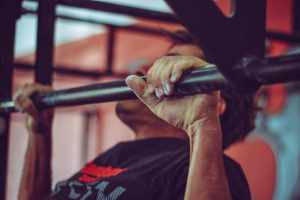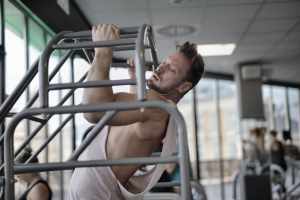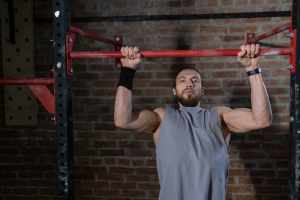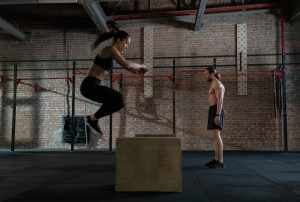Often it so happens that we go to the gym without even knowing our body requirements. Additionally, we don’t have much insight into the target areas of the workouts that we intend to practice. However, if you are curious to know the effectiveness of some exercises and why you should follow a particular workout regime, then this is the correct place for you. In this article, we will discuss what muscles do pull-ups work so that next time you hit the gym, you are adequately informed about what you are doing.
Most of the procrastinator gym-goers have a dream. What is that? The goal is to do 100 pull-ups someday! Fulfilling that dream might seem cumbersome at present, but following proper guidelines can lead you there.
However, it would be best if you started slow. Many beginners seem to ask how many pull-ups are good! The answer to that question is complex because it is still under research. However, depending on the strength of what muscles do pull-ups work, the number of pull-ups will vary.
Table of Contents
What muscles do pull-ups work?
So, let’s first find out the core areas that pull-ups usually strengthen!
At the very beginning, you need to grip the sturdy pull-up bar. The palm muscles and the forearms muscles help us in making a firm grip.
The usual tactic to do a healthy pull-up is to close the space between hands and shoulders. Here, the biceps of your body helps in that contraction and expansion of your body.
In the end, when we bring the elbows towards the body sides, we use latissimus dorsi muscle. Our teres muscle groups and rotator cuffs contribute to it.
Even though biceps play a most vital role in pull-ups, you might listen to people talking about the importance of triceps and pecs in the workout. But, have you heard about levers? They help in pulling some heavyweight. Similarly, triceps and pecs coordinate with the vital muscles to do successful pull-ups and chin-ups.
Don’t worry about putting excessive pressure on these muscle groups because the workouts are designed not to affect these muscles enormously. However, the distribution of pressure all across your body muscles makes the pull-up a mandatory exercise.
You can answer what muscle do pull-ups work if you know that pull-ups harmonize all the muscle activity of your body. These are a primary set of movements that need the participation of your body muscles culminating in a compound dynamic exercise.
Hence, the gym trainers focus on these compound exercises rather than the singular activity to perfectly harmonize your body’s necessary muscles.

What muscles do chin-up work?
You might have noticed that we have used both the terms pull-ups and chin-ups. They are nearly coterminous; however, they have one essential difference. In the case of chin-ups, the use of the bicep is more, while in the case of pull-ups, trapezius or the lower traps muscle is more worked.
So, the visuals can be deceptive. Even if you think biceps are used more in pull-ups, the chin-up is doing the most work there. So, if you are wondering do pull-ups work biceps, then the answer is not a no, but their functionality is a little lesser than in chin-ups. In this way, you also get the response to one of the most FAQ or frequently asked questions about what muscles do chin-ups work with!
Proper pull-up technique
Now that we have discussed what muscle do pull-ups work, you need to follow a proper pull-up technique. In this way, you won’t hurt your back.
You can use these tricks to answer your question about how to do pull-ups.
Step 1
You will need a sturdy pull-up bar and then place the hands carefully to get e firm grip. Your palms should face away from the body. This is known as an overhand grip. If the bar is way above you, you can stand up on a box. In this way, you are fixated on the proper starting position.
Step 2
Breathing is an essential part of every exercise. So, it would be best to start by proper inhaling and exhaling, at first try hanging from the bar by lifting your leg from your floor or the box. After that, try to pull the belly button towards your spine. While doing this, don’t keep your shoulders static. They should undergo an up and down movement.
Step 3
The engagement of all the body muscles in the back and arms is mandatory in a proper pull-up. This is why what muscles do pull-ups work is such an essential question. After that, bend elbows followed by a raise of the upper part of your body. It would help if you continued raising the upper portion unless your chin reached over the pull-up bar.
Swinging the legs is a no-no. Also, it would help if you were mindful about not shrugging the shoulders while going up. This might affect your body adversely. The shoulder blades of your body should be down and back all through the exercise.
Step 4
When you have raised your body upwards, take a deep breath. After that, start by extending your elbows. Then, try lowering your body down to your original position. This entire process should be slow to coordinate all the muscles. Taking it slow might be painful, but it won’t cause any damage. But, if you rush through the process, the chance of hurting your body and muscles increases.
This entire process might not be a cup of tea for you in the beginning. If that is the case, don’t take any tension. Gradually toughen up your workout regime and start with exercises that slowly increase your body strength.

Do pull-ups work chest
Wondering do pull-ups work chest is a common thought. Not all pull-ups help in strengthening your chest. But, if you are doing a wide-grip pull-up, it strengthens your back, shoulder, arms, and chest.
Wide grip pull-up
Here is how you can do a wide grip pull-up
Grab the pull up bar with your thumbs pointing to each other
The torso and arms should form a perfect Y.
Start pulling your body upwards
Inhale and get back to the original position
The muscles working while doing a wide grip pull-out are Thoracic erector spinae, trapezius, Latissimus dorsi external oblique, teres minor, infraspinatus, and rhomboids.
Thus, you can see that depending on your grip position, you can change the target areas of a pull-up.
If you haven’t had previous strength training, a complete pull-up cycle might be challenging. In that case, answering how many pull-ups is good will be a complicated answer.
Assistance in a pull-up
Here is how you can get some assistance in doing a pull-up
Firstly, you can make use of a resistance band to assist you in your pull-up training. Make a loop of the band around the bar, keep the other end loose, and then try placing your foot on that loop. After that, follow the usual technique.
Try to use thick resistance bands, which will help you in doing the pull-ups more efficiently.
You can also use isometric holds and negative pull-ups for your assistance in pull-up training,
Pull-up benefits
What muscles do pull-ups work? This will have an answer that will help you point down the benefits of doing pull-ups?
Ideally, if an adult male can perform 7-8 pull-ups and an adult female can do 1-3 pull-ups, that is considered a fit-bodied person. However, these data are highly controversial and need research.
Pull-ups, if you do them correctly, will hugely benefit your health. Here are some of the essential benefits of pull-ups.
Strength of upper body
Pull-ups are major strength exercises. It toughens the upper body core muscles.
Low impact exercise
You might be suffering from sore joints. In that case, you can try doing pull-ups because it doesn’t cause any additional high-impact strain on your body and also improve your muscle strength.
Physical and mental health
A fit body leads to a healthy mind. Workout our increases focus. So, apart from maintaining good physical health, working out ensures good mental health also. The pull-ups require concentration on your body, and according to many essential journal reports, pull-up creates a positive impact on your overall health.
So if you now know what muscles do, pull up work, head to the gym, and start your fitness training.

What muscles do push-ups work?
Another dreadful hardcore strength workout is push-up. If your gym trainer suddenly says, “come on we need to cross the 20 push-up milestone today,” you might feel like fleeing from the gym.
If you are wondering what muscles do push ups work, here is a list
- Abdominals,
- Serratus Anterior
- triceps or arm backs
- pectorals or the chest muscles.
Types of push-ups
Here also, you can try many varieties which will target different muscles of your body, bringing about different results. Some of the conventional push-ups are listed below, which you can try.
Standard Push-up
If you want to improve your chest muscle, then you can try out this push-up. First, position your body on a plank. You should not raise your hips, and you should tuck your pelvis in. Place your palms immediately under the shoulder.
Your back should be completely flat. Start lowering the body; try bending your elbow gradually. Keep in mind to point them towards the back.
Keep lowering your body until the chest grazes on the floor.
Start getting up gradually without bending the body.
Modified push-up
Often the core body is not strong enough to do a standard push-up. In that case, you can try doing a modified push-up. However, in this push-up, you bend your knees in such a way as to touch the ground. Here also you increase your chest muscles.
Your body should form a perfectly straight line between your knees and the shoulders. In that position, slowly bend your elbows, followed by lowering the body. After that, gradually get up. Try repeating this as many times as you can, and try to do at least three sets.
Wide Push-up
This push-up mainly targets both your shoulders and chest. Your hands should have a wide gap between them, more comprehensive than in standard push-ups. Beginners usually find wide push-ups easier as the pressure is distributed widely.
Narrow Push-ups
This is a real struggle. But this enormously strengthens your triceps. As the name suggests, the shoulder gap is much narrow in this push-up. So, the core needs to be very tight to pull off this push-up successfully.
One study suggests that triceps and pectoralis major gets impacted more effectively if one does a narrow push-up instead of a comprehensive or standard push-up.
Decline Push-up
If you want to focus on your shoulders and upper chest, then go for a decline push-up. Here, it would be best if you put the feet above some box or bench. After that, follow the standard push-up technique.
Plyometric
This is an exercise of advanced level. Only if you have considerable upper body muscle strength, then only go for it.
After following the standard procedures, when you reach the top of your palms, try to push yourself up without the support of your palms.
You should land lightly on the floor, or else you might hurt your arms and wrists.
So, with these various push-up techniques, you can work considerably on your chest, shoulders, and biceps. Don’t be afraid to head to the gym after seeing all these lists. It would help if you took it slow. Otherwise, you might feel burned out.

Final Thoughts
Work-out is fun when you know what muscles do pull-ups work. Ending it on this note might seem a bit cliché to the procrastinators and a positive motive force for gym-goers. However, if you have watched Brittany runs the Marathon, you know you need a proper mindset to get yourself back on track. So, once you have done that, no one can pull you back.




























